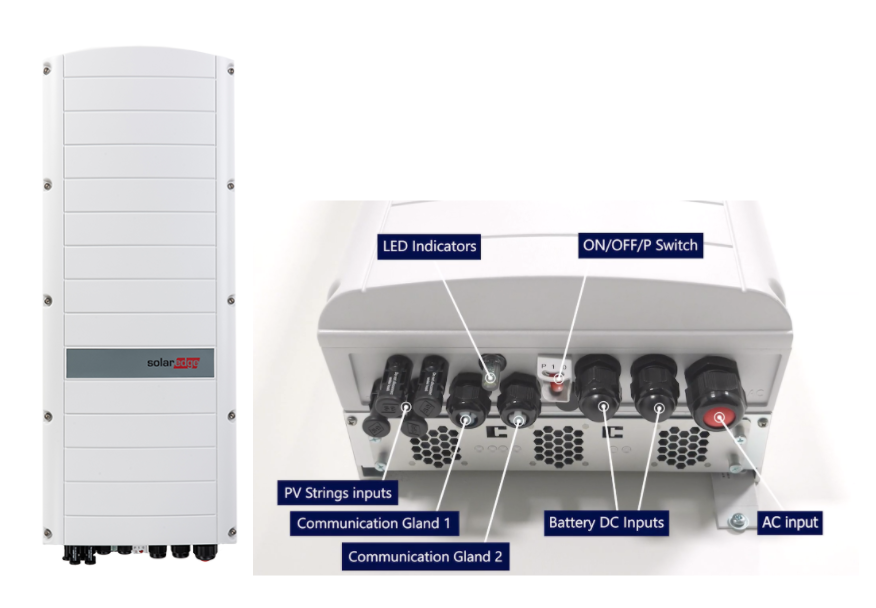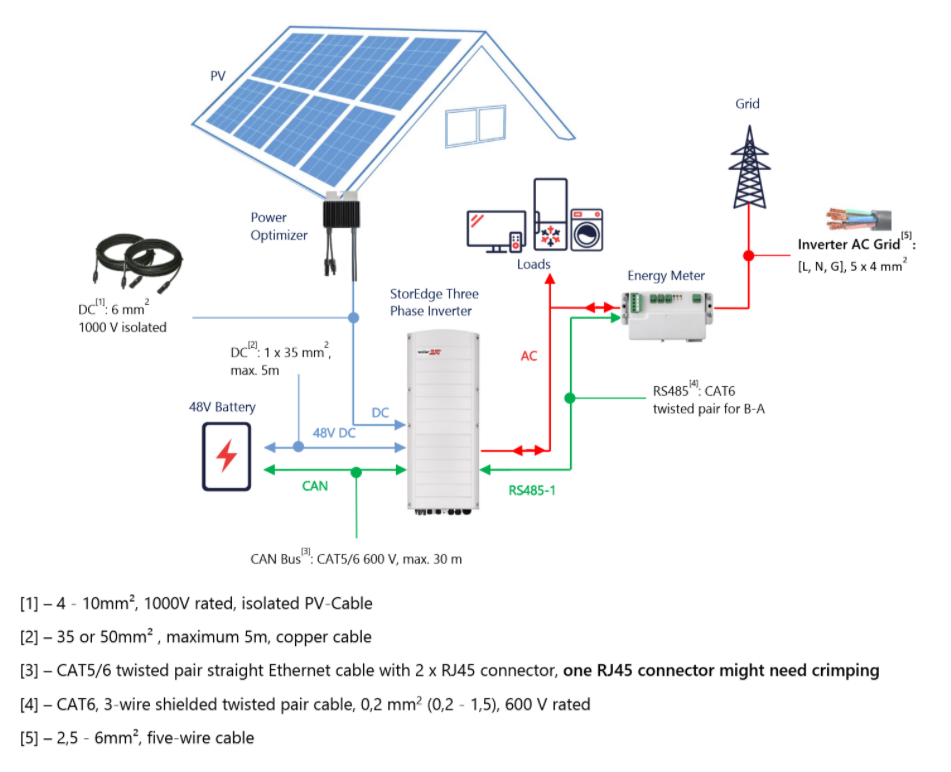Overview: StorEdge Three Phase Inverter by SolarEdge
A Solution for Home Energy Storage
Power is stored in the battery and can be used for various applications such as maximized self-consumption and time of use profile programming. For backup power, an inverter specifically designed for backup applications is required, though this inverter does not provide back-up functionality.
A single StorEdge three-phase inverter could connect directly to one Low Voltage 48V RESU 3.3 / 6.5 / 10 / 13 from LGchem.
System Components
- StorEdge Inverter – These are connected to a battery and supply control while monitoring signals to the battery for operation, in addition to its traditional functionality as a DC-optimized PV inverter.
- Energy Meter and Current Transformers – The meter is used by the inverter for export/ consumption readings, and for Smart Energy Management applications, such as export limitation, and maximizing self-consumption.
- Battery – A 48V battery designed to work with the StorEdge system. Make sure to use SolarEdge-approved batteries only.
Installing StorEdge Three Phase Inverter
LG Chem Residential Storage RESU 48V Installation Video
Operation Modes
Maximize Self-consumption (MSC)
In this mode, the battery is automatically charged and discharged to meet consumption needs. The battery has two states:
- OFF – The battery is on standby
- ON – The battery is controlled for maximized self-consumption
Battery OFF periods can be configured to extend battery lifetime by minimizing the number of menial discharges (for example at nighttime or during the winter).
Configuring the StorEdge Three Phase Inverter with SetApp
A charge/discharge profile is created from a yearly calendar on Monitoring platform. The yearly calendar is divided into segments, with one of seven charge/discharge modes assigned to each segment.
A profile comprises three components:
- A daily profile type: Defines the charge/discharge modes throughout the day. Different day types may be defined, for example, winter weekday, spring weekday, weekend, holiday, etc.
- A seasonal profile: Defines weekly profiles to be used during specified periods of the year. These periods must cover the entire year. A typical case of usage is creating seasonal profiles corresponding to the seasonal changes of electricity rates.
- Special day type: Defines dates that should have a specific daily profile instead of the profile defined for the relevant period. For example, if you define a seasonal profile from Dec. 15 to Jan. 15 but want the system to have a different daily profile for New Years, you can define a special day. Special days can be set as one-time events or as recurring events.
There are several available modes to select for each time block:
- Solar power only
- Charge from clipped solar power
- Charge from solar power
- Charge from solar power and grid
- Discharge to maximize export
- Discharge to minimize import
- Maximize self-consumption
Further Information:
Posts you might like:

Subscribe to our newsletter
so that you don’t miss any news!












